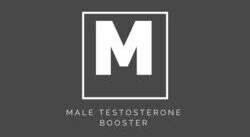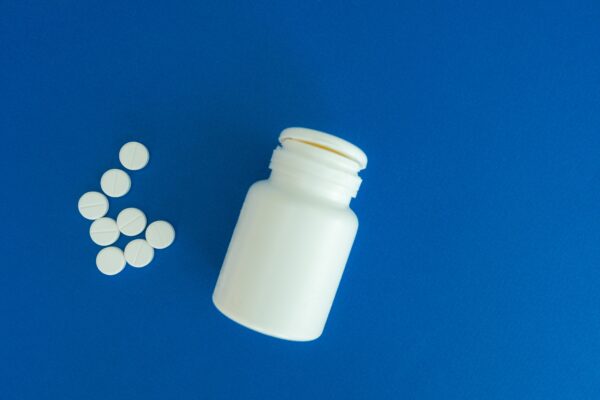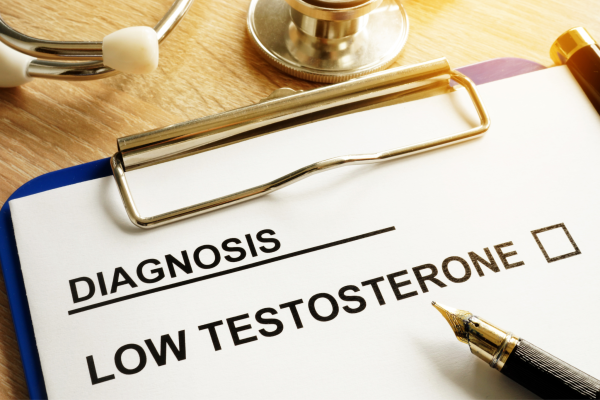When it comes to understanding testosterone, it’s not just about masculinity or muscles—though those are perks, of course. Testosterone is the powerhouse hormone responsible for everything from mood and energy levels to libido and physical strength. But what happens when testosterone levels aren’t where they should be? Let’s dive into the details.
- What Is Testosterone and Why Does It Matter?
- What Are Normal Testosterone Levels?
- Signs of Abnormal Testosterone Levels
- What Causes Abnormal Testosterone Levels?
- How to Test Your Testosterone Levels
- How to Manage and Optimize Testosterone Levels
- The Risks of Ignoring Abnormal Testosterone Levels
- When to See a Doctor
- Final Thoughts: Take Control of Your Testosterone
- Sources and Links
- FAQs: Testosterone Levels – Normal vs. Abnormal
- Question: What is considered a normal testosterone level?
- Question: What are the symptoms of low testosterone?
- Question: What causes low testosterone levels?
- Question: How can testosterone levels be tested?
- Question: How can I naturally boost my testosterone levels?
- Question: Is testosterone replacement therapy (TRT) safe?
- Question: What are the risks of having high testosterone levels?
What Is Testosterone and Why Does It Matter?
Testosterone is the primary male sex hormone, produced mainly in the testicles (yes, the family jewels are multitasking geniuses). This hormone plays a crucial role in:
- Muscle mass and strength
- Bone density maintenance
- Sexual and reproductive health
- Mood regulation and mental sharpness
Without it, you’d be low on drive—both in the bedroom and in life. So, ensuring your testosterone levels are optimal is key.
What Are Normal Testosterone Levels?
Let’s break it down:
- Total Testosterone: Measures all the testosterone in your bloodstream, both bound and free.
- Normal range: 300-1,000 ng/dL (nanograms per deciliter).
- Free Testosterone: The active form, not bound to proteins, ready to work.
- Normal range: 9-30 ng/dL.
Your levels can vary depending on age, lifestyle, and overall health, but staying within these ranges is ideal.
Signs of Abnormal Testosterone Levels
Symptoms of Low Testosterone (Hypogonadism)
Low testosterone (or “Low T”) is more common than you might think. It affects approximately 20% of men over 60, but younger men aren’t immune either. Here’s what to watch for:
- Fatigue and low energy: Feeling like you need a nap every hour? That’s not normal.
- Decreased libido: Your drive might feel like it’s stuck in neutral.
- Erectile dysfunction: Struggling to rise to the occasion? Low T could be the culprit.
- Mood swings: Think emotional rollercoaster—irritability, depression, or apathy.
- Loss of muscle mass: Noticeable weakness or smaller gains at the gym.
Symptoms of High Testosterone
While rare, excessive testosterone can happen, often due to steroid abuse or certain health conditions. Symptoms may include:
- Aggression and mood swings: Uncontrolled irritability or outbursts.
- Acne and oily skin: That teenage breakout phase could return.
- Increased risk-taking behavior: Reckless decisions could skyrocket.
- Enlarged prostate: Frequent urination, especially at night.
What Causes Abnormal Testosterone Levels?
Causes of Low Testosterone
Low T can result from:
- Aging: Testosterone naturally declines by about 1% per year after age 30.
- Obesity: Fat cells can suppress testosterone production.
- Chronic health conditions: Diabetes, high blood pressure, or metabolic syndrome.
- Stress: High cortisol levels can reduce testosterone.
- Lifestyle habits: Poor diet, lack of exercise, and insufficient sleep.
Causes of High Testosterone
High testosterone is often linked to:
- Steroid use: Bodybuilders and athletes are at risk.
- Tumors: Rare cases of tumors in the adrenal glands or testes.
- Genetic conditions: Disorders that alter hormone production.
Testosterone Overdrive: Recognizing the Signs of High Testosterone in a Man
How to Test Your Testosterone Levels
Testing your testosterone is easier than you think. It involves a simple blood test, typically done in the morning when testosterone is at its peak. Results will reveal:
- Total testosterone levels
- Free testosterone levels
- Sex hormone-binding globulin (SHBG)
Your healthcare provider can interpret these results and determine the next steps.
Understanding Testosterone Testing: When and How to Get Checked
How to Manage and Optimize Testosterone Levels
Natural Ways to Boost Testosterone
If your levels are low, start with these proven strategies:
- Exercise Regularly
- Resistance training and HIIT (high-intensity interval training) are especially effective.
- Eat Testosterone-Friendly Foods
- Include protein (eggs, lean meats), healthy fats (avocado, nuts), and zinc-rich foods (shellfish).
- Get Quality Sleep
- Aim for 7-9 hours of uninterrupted sleep. Testosterone production occurs during REM sleep.
- Reduce Stress
- Meditate, practice yoga, or take up hobbies to lower cortisol levels.
- Lose Excess Weight
- Dropping body fat can significantly boost testosterone levels.
Medical Treatments for Low T
If lifestyle changes don’t cut it, medical intervention might be necessary:
- Testosterone Replacement Therapy (TRT)
- Delivered via injections, gels, or patches, TRT restores levels to the normal range.
- Clomiphene Citrate
- A non-steroidal treatment that stimulates natural testosterone production.
- HCG Therapy
- Human Chorionic Gonadotropin (HCG) stimulates the testes to produce testosterone.
The Risks of Ignoring Abnormal Testosterone Levels
Low testosterone isn’t just an annoyance; it’s a health risk. Untreated, it can lead to:
- Osteoporosis: Weak and brittle bones.
- Cardiovascular issues: Higher risk of heart disease.
- Infertility: Reduced sperm production.
- Cognitive decline: Difficulty focusing and memory loss.
On the flip side, high testosterone can increase the risk of:
- Blood clots
- Sleep apnea
- Liver damage
When to See a Doctor
If you’re experiencing any symptoms of abnormal testosterone levels, don’t wait. Consult a healthcare professional for proper testing and treatment options.
Final Thoughts: Take Control of Your Testosterone
Gentlemen, testosterone isn’t just a hormone—it’s a life force. Whether you’re feeling off, struggling with energy, or just curious about your health, keeping tabs on your testosterone levels is essential. Remember, staying proactive about your health today ensures a stronger, healthier tomorrow.
Stay sharp, stay strong, and take care of yourself—because no one else can do it like you.
Sources and Links
Here are some trusted resources to learn more about testosterone levels, their impact, and treatment options:
- Mayo Clinic – Testosterone Level Test
Learn about how testosterone tests work and what your results mean.
Visit the Mayo Clinic Website - National Institutes of Health (NIH) – Testosterone and Men’s Health
A detailed overview of testosterone’s role in overall health.
Read the NIH Article - Harvard Health – Understanding Testosterone Levels
Comprehensive information on testosterone’s functions and what happens when levels are abnormal.
Explore Harvard Health Resources - American Urological Association – Low Testosterone
Professional insights into the causes, symptoms, and treatments of low T.
Visit the AUA Website - WebMD – Testosterone Therapy Risks and Benefits
A balanced look at the pros and cons of testosterone replacement therapy.
Check WebMD’s Guide - Endocrine Society – Hormone Health Network
Trusted medical information about hormone health and endocrine conditions.
Discover More at Hormone.org
Note: Always consult with a healthcare professional for personalized advice tailored to your specific health needs.
FAQs: Testosterone Levels – Normal vs. Abnormal
Question: What is considered a normal testosterone level?
Normal testosterone levels typically range from 300 to 1,000 ng/dL for total testosterone in adult men, with free testosterone levels ranging from 9 to 30 ng/dL.
Question: What are the symptoms of low testosterone?
Symptoms of low testosterone include fatigue, low libido, erectile dysfunction, mood swings, loss of muscle mass, and increased body fat.
Question: What causes low testosterone levels?
Low testosterone can result from aging, obesity, chronic health conditions like diabetes, high stress levels, or poor lifestyle habits such as lack of exercise or inadequate sleep.
Question: How can testosterone levels be tested?
Testosterone levels are measured through a blood test, typically conducted in the morning when levels are at their peak. The test can measure both total and free testosterone.
Question: How can I naturally boost my testosterone levels?
Natural ways to boost testosterone include regular exercise, a balanced diet rich in protein and healthy fats, reducing stress, improving sleep quality, and maintaining a healthy weight.
Question: Is testosterone replacement therapy (TRT) safe?
Testosterone replacement therapy can be effective but carries risks such as increased risk of blood clots, sleep apnea, and enlarged prostate. Always consult with a healthcare professional before starting TRT.
Question: What are the risks of having high testosterone levels?
High testosterone can cause aggression, acne, oily skin, risk-taking behaviors, and prostate issues. In rare cases, it may be linked to certain medical conditions or steroid abuse.





